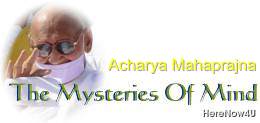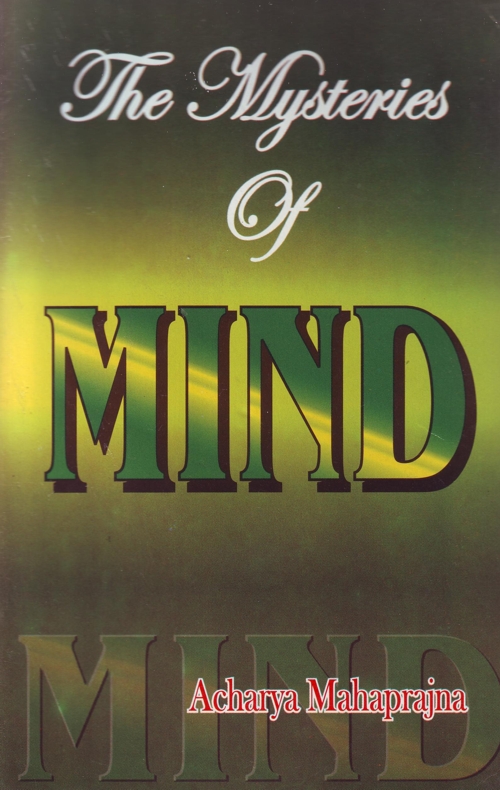
Who is the creator of the body? The jiva alone is the creator of the body and it creates the body of its own accord. If there were no jiva, there will be no body. Sarira paryapti (potential body), ahara paryapti (food potential), language, mind and breath are produced by the jiva only. All these are material entities constituted by pudgala practices but not created by pudgala. Pudgala (atomic) particles spread across the sky can be converted into language, mind, breath, and body. It is the jiva, which converts them. The jiva is a great creator. It creates gross entities out of subtle entities. It is the creator of all kinds of subtle and gross things. All the pudgalas, whether subtle or gross, which are being used by man are nothing but the evolutes of Jiva. What we eat is nothing but the physical form of the jiva. Whatever we eat, wear, sit or sleep on is the body of the jiva.
There are two categories which we have to consider:
- The body with jiva,
and - The body without jiva.
Although the entire world-process has been set in motion by the jiva, the jiva itself remains hidden behind a curtain. Proponents of the doctrine that God created the world also hold that God himself remains hidden behind a curtain. You may substitute the word jiva for God. Both the views can be synthesised by saying that they jiva created the world and as a creator he is God.
The fundamental nature of the jiva is to see and know. The practitioner has to arrive at this state of the jiva, which is for the time being hidden from him. He needs tremendous energy to achieve it. Both muscle and machine need energy; otherwise we cannot make any kind of progress. Sitting in a single posture for a long time needs energy.Sadhana and long meditation also need energy.
The question to be considered next is how to arouse energy. What are the guidelines for arousing energy?
Breath-perception is the first step towards the arousing of energy. Dirgha-svasa-preksa or long-breath-perception is an important exercise. Let us first understand the nature of breath. Breathing is a very deep-rooted process. Let us understand its roots. Breath is connected with prana (life principle) , prana is connected with paryapti or subtle prana, and subtle prana is connected with the karma body, which is the root of breath. When the soul after it has relinquished one body it enters into another body; it has two bodies attached to it, the taijasa body and the karma body. The soul travels with both of them from one body to another. In the first moment of its birth in a new body, it draws its sustenance from the karma body. This sustenance is called oja ahara (drawing in energy). We cannot live without energy,. Once the energy collected in the body is spent up, the body dies. There can be no prana without energy. It is the life-energy, which keeps the body alive.
The newborn soul accumulates in the very first moment of its birth the energy required for its life. Then begins the building up of the gross body. The whole development of the gross body, its nervous system, its glands and plexuses, etc. are not original substances but derived or secondary substances. Their essence lies in the karma body. The gross body is the carrier of all the potential of the karma body, its energy centres as well as con sciousness. If the potential of the karma body is limited to a single sense-organ, the gross body will develop only a single sense-organ i.e. the sense-organ of touch. Its physical structure will not have provision for the remaining four sense-organs. The sense-organs of sight, hearing, smell and taste will not be formed. If the karma body has the potential for two or all the five sense- organs, there will be an equal number of sense-organs in the gross body. If the karma body has the potential for the development of the mind, the gross body will develop a brain, otherwise not. Animals, which do not have a mind, do not have the spinal cord and brain also. If the gross body has a spinal cord and a brain, it must have a mind also. Thus the building and development of the gross body has its roots in the subtle body. We may call the gross body a reflection of the subtle body.
Physiologists have analysed the glands situated in the human body. When the hormones in the Thyroid gland are not in a balanced state, the body will remain a dwarf. The whole of development of the body, brain and mind, which results in the body becoming long or beautiful or ugly or deceased or healthy or intelligent or otherwise, depends upon the secretions of the glands. It is the glands, which determine the development or deterioration of the gross body.
Karma has been divided into eight categories. One of these is what is called nama karma. It has several functions and divisions. It is due to nama karma that the body becomes dwarfish or tall. The beauty or ugliness of the body, the sweetness or hoarseness of its voice, etc. are determined by the potential of nama karma. Sadhakasin their deep meditation have contacted the subtle body and analysed its subtleties. Scientists have not yet succeeded in any such attempts. They have analysed and ex plained the gross body only. Let us undertake a comparative study of the scientists and those of the spiritual practitioners. The study will reveal that both of them say the same thing. The spiritual plane is higher than the physiological plane. Observations made by the spiritualists are based on their study of the karma body, whereas those of the scientists are based on a subtle analysis of the gross body, which is a reflection of the former. But both of them have adopted the same language, A body and its reflection in a mirror cannot be two unconnected things. The reflection in the mirror is the reflection of the body, which stands before it, and of no other body. Scientists have explained the reflection, whereas the karma sastras have explained the origin of the reflection. Physiologists speak of the secretions of the glands, karma sastras speak of the same thing as the saturation of juices (rasa). The subtle body produces secretions through the glands. This secretion drives and influences all the tendencies of the living body. Having understood these tendencies and, how they work we can pass on to the subtle body. The purpose of sadhana is to enable the practitioner to enter into the subtle body through the gross body and to come face to face with the enzymes processed by the karma body. It is the modification in the manifestations of the soul, which activates the karma body. The practitioner has to know and understand these subtle transformations of the soul.
The gross and the subtle bodies are only instruments of bringing about the transformations of the soul. The practitioner has to understand the substances, which transform themselves, and the instrumental causes which help in the fruition of the transformations. He has also to understand the forms, which the changes take. The mind and the soul go on transforming themselves cease lessly. If these transformations take place in the context of the centres of pure consciousness and flow towards them, they become auspicious. On the other hand, if they tend towards the centres connected with suppressed desires, they become inauspi cious. Centres of consciousness which excite the tendencies of anger, pride, deceit, greed, hunger, fear, sex and acquisitiveness, produce evil consequences.
 Acharya Mahaprajna
Acharya Mahaprajna

